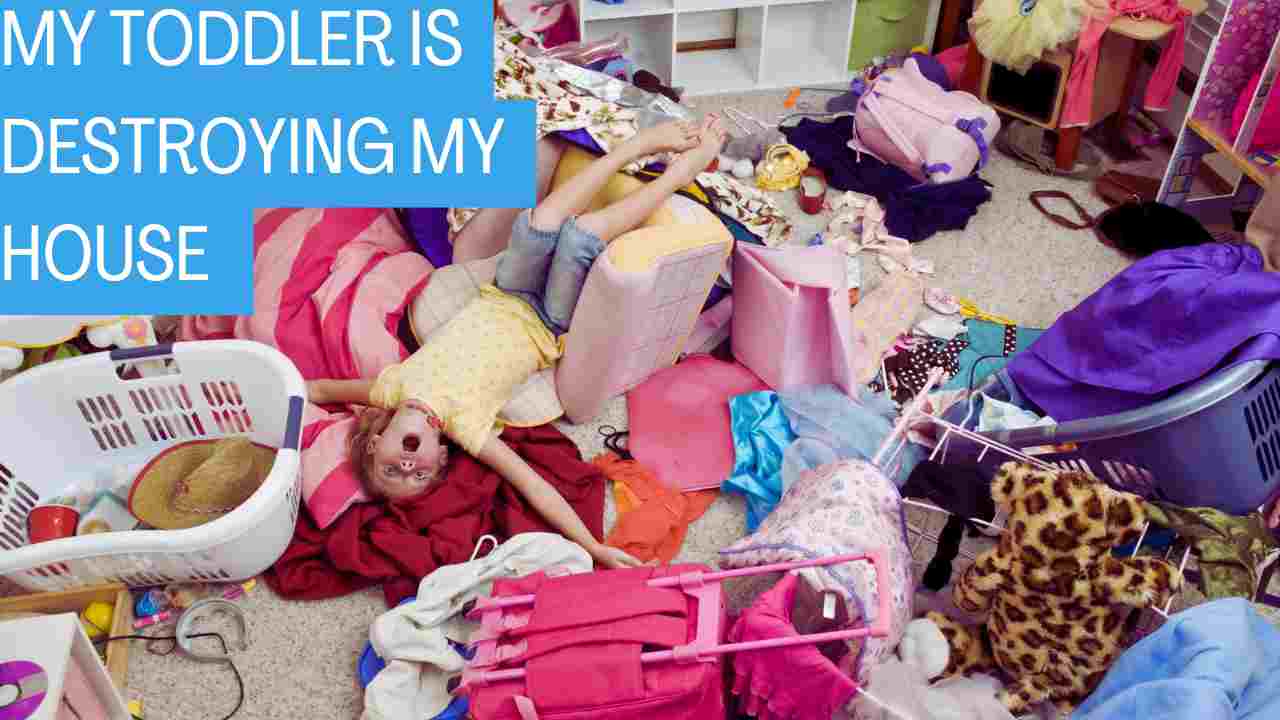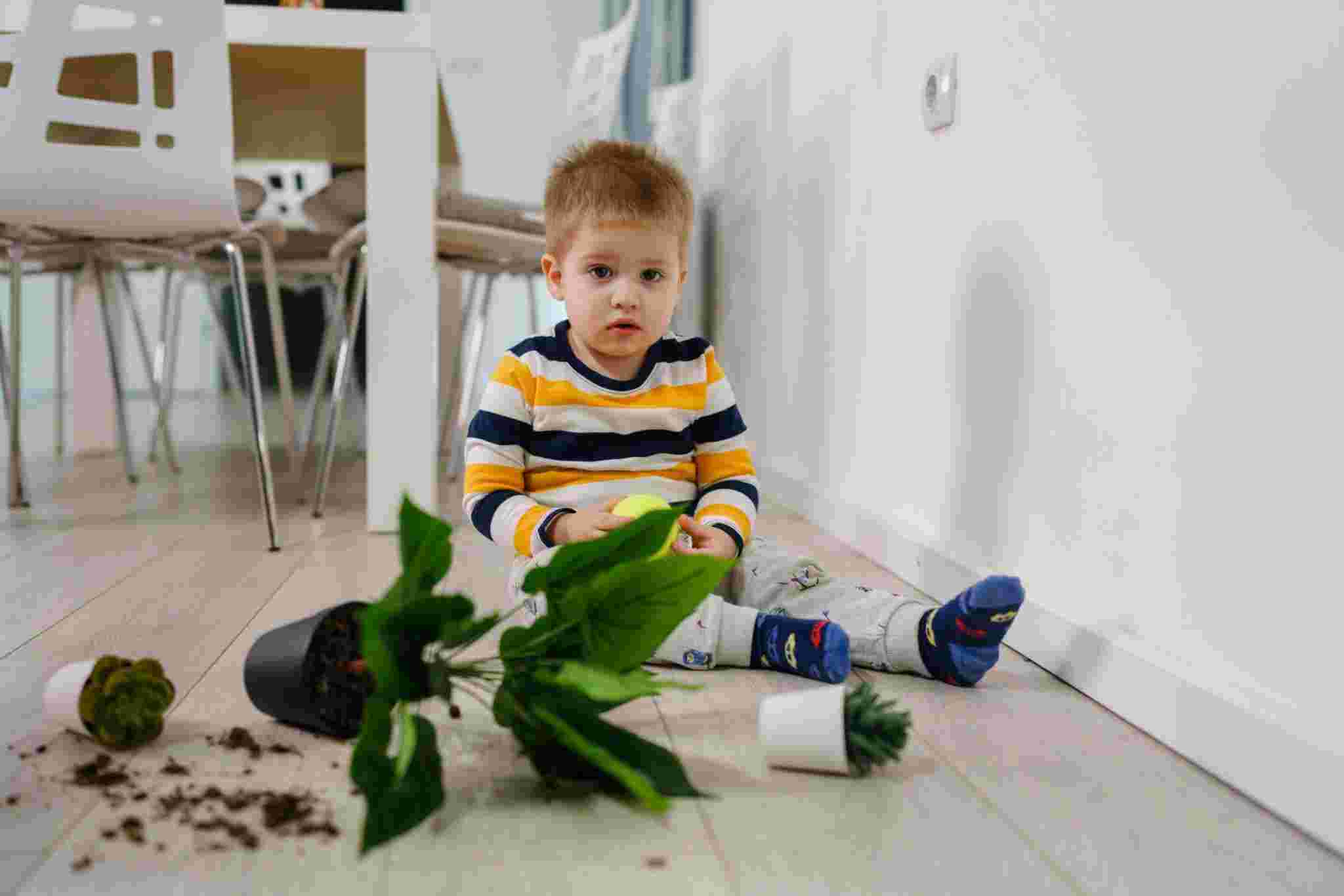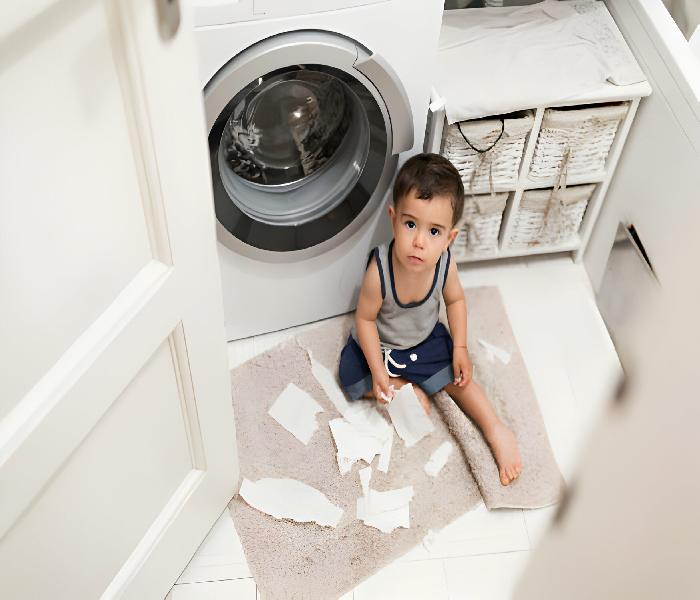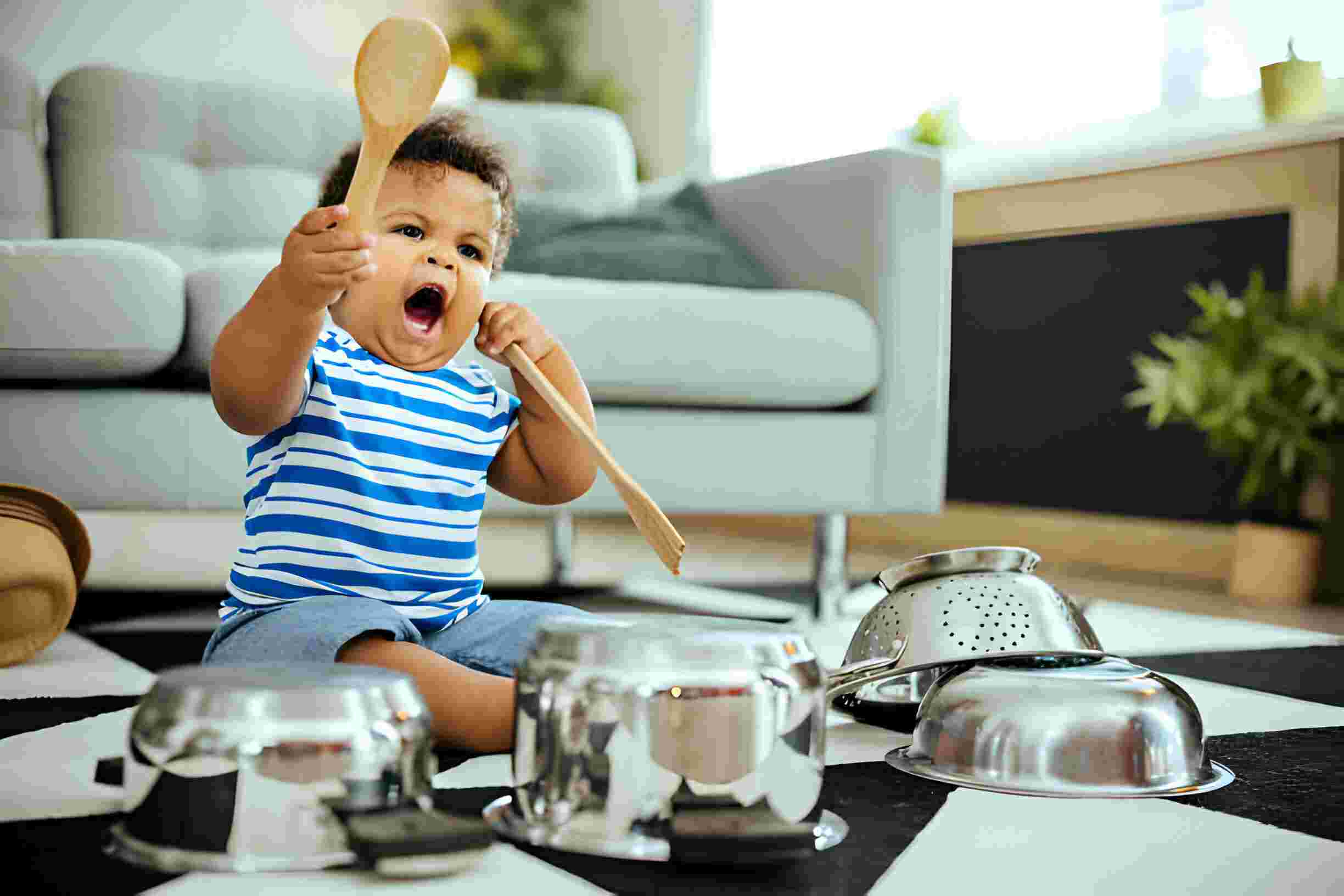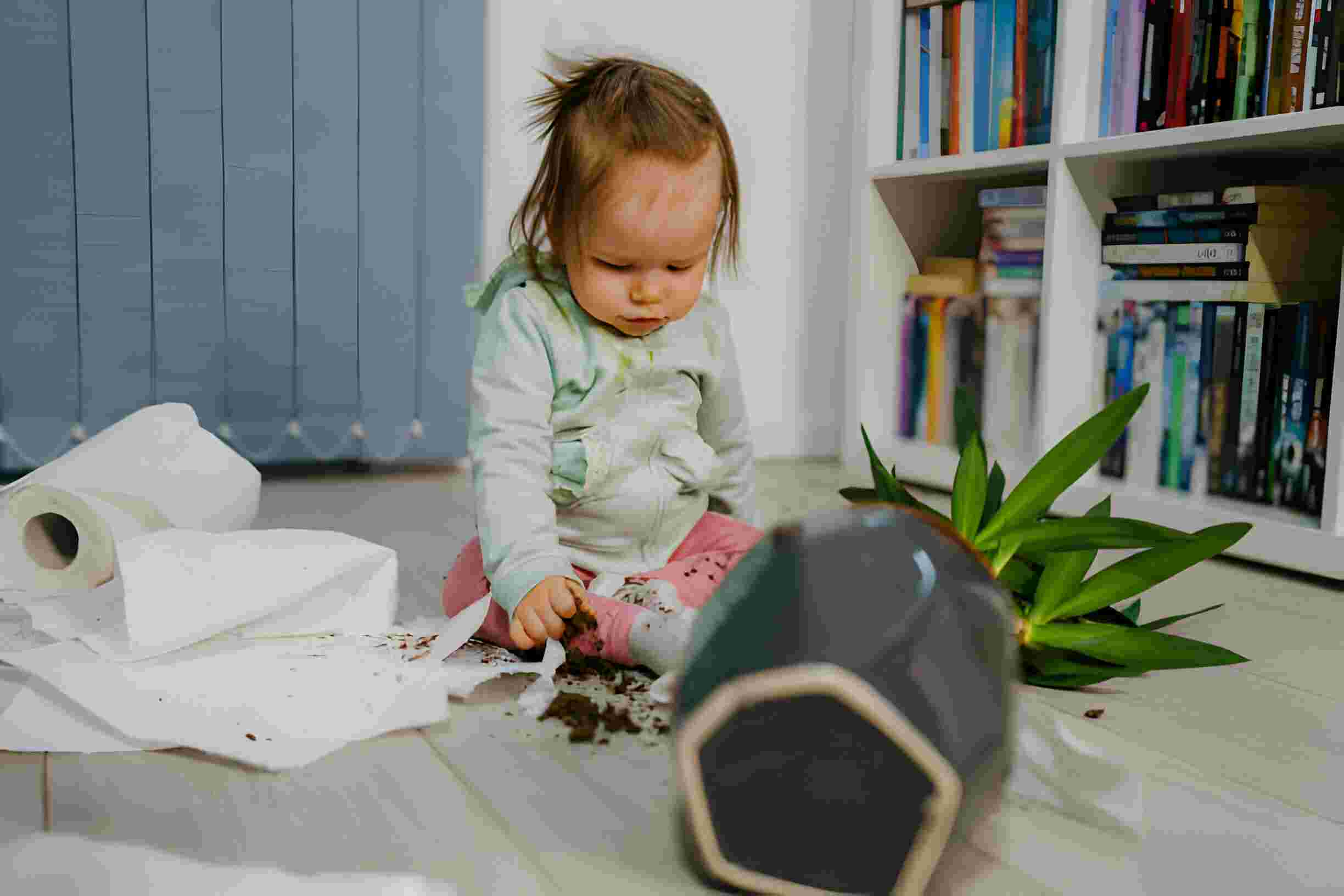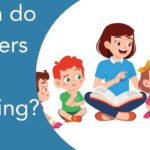Parenting can be a wonderful and rewarding journey, but it also comes with its fair share of challenges.
Dealing with the boundless energy and curiosity of a toddler can be both a joyful and challenging experience.
In the midst of their rapid growth and exploration, many parents find themselves facing a unique predicament: my toddler is destroying my house.
In this article, we’ll examine the common challenges and experiences faced by parents whose toddlers are determined to destroy everything in sight, reviewing the motivations behind their witty actions, providing helpful advice on how to handle the mess, and emphasizing the value of creating a secure and caring environment for both parent and child.
My toddler is destroying my house
Toddlers often explore their surroundings through sensory experiences and experimentation, which can lead to what may seem like destructive behavior.
This is a normal part of their development as they learn about cause and effect, textures, and their environment.
Factors Contributing to Destructive Behavior:
1. Cognitive Development:
Toddlers are in a stage of rapid cognitive growth. They’re eager to learn about objects and their properties, which can lead to exploration through touching, banging, and throwing.
Don’t miss:
- How long should I let my baby sleep after vaccinations? Explained
- What to do if child doesn’t want to go to school?
2. Sensory input:
Toddlers are sensory learners, discovering the world through touch, taste, smell, sight, and sound. Destructive behavior often provides sensory feedback that helps them understand their environment.
3. Motor skills:
Knocking things over helps them practice their fine and gross motor skills, enhancing hand-eye coordination and physical control.
4. Attention and reaction:
Toddlers thrive on attention, even if it’s for negative behavior. Knocking things down might elicit a reaction from adults, reinforcing the behavior.
5. Emotional Expression:
Toddlers have limited vocabulary to express their emotions. Destructive actions can serve as a way to communicate their feelings like frustration, excitement, or even boredom.
6. Curiosity and Exploration:
Toddlers are naturally curious and eager to learn about the world around them. They might pull, poke, and push things to understand how they work.
7. Sensory Exploration:
They’re discovering different textures, sounds, and sensations. This often involves touching, squeezing, and even throwing objects.
8. Boundary Testing:
Toddlers are beginning to understand limits and boundaries. Testing these limits is a natural part of their growth and development.
What does it mean when a child Destroys Things?
When a child engages in destructive behavior, such as breaking or destroying things, it can stem from various underlying reasons.
It’s important to understand that this behavior might serve as a form of communication, expressing their emotions, frustrations, or needs that they might not be able to articulate verbally. Some potential reasons for this behavior include:
1. Exploration and Curiosity:
Young children are naturally curious and use their senses to explore the world around them. Breaking things might be a way for them to learn about the physical properties of objects.
2. Emotional Expression:
Children might lack the vocabulary to express their feelings effectively. Destructive behavior can be a way for them to vent their frustrations, anger, or anxiety.
3. Attention-Seeking:
Children often crave attention, and negative behaviors like destroying things can sometimes be a way to gain the attention of adults, even if it results in negative consequences.
4. Lack of Impulse Control:
Young children are still developing impulse control. They might act on their urges without fully understanding the consequences of their actions.
4. Imitating Behavior:
Children learn by observing and imitating the actions of adults or peers. If they see destructive behavior modeled by others, they might imitate it.
5. Sensory Stimulation:
Some children might find sensory satisfaction in certain types of destruction, such as the sound or feeling of breaking objects.
6. Frustration with Limits:
If a child feels restricted by rules and boundaries, they might act out by breaking things as a way to assert some control.
7. Communication Difficulties:
Children with speech or communication delays might resort to destructive behavior as a way to communicate their needs or wants.
8. Changes or Stressors:
Major life changes, transitions, or stressors like a move, family conflict, or starting school can lead to behavioral changes, including destructive tendencies.
9. Developmental Stage:
Destructive behavior can be more common during certain developmental stages, such as the “terrible twos” or the preschool years, as children are learning to navigate their emotions and surroundings.
Is it normal for toddlers to be destructive?
Yes, it’s normal for toddlers to exhibit destructive behavior as they explore their environment and develop their understanding of the world around them.
Destructive behavior is often a part of their learning process. By knocking down blocks, ripping paper, or throwing objects, they’re figuring out how things work and how their actions can impact their environment.
Toddlers are naturally curious and are in a stage of rapid cognitive and physical development. This can lead to actions that seem destructive, like drawing on walls or taking things apart.
They are learning about cause and effect, testing boundaries, and trying to understand how objects and their actions interact.
Destructive behavior can provide them with valuable information about their surroundings. For example, knocking over a tower of blocks helps them learn about balance and gravity.
Toddlers also lack impulse control and have difficulty expressing their emotions and frustrations verbally. Destructive behavior might be an outlet for their feelings of anger, frustration, or even excitement.
Additionally, they might imitate actions they’ve seen adults or older children perform, without understanding the consequences.
Parents and caregivers can help manage destructive behavior by providing appropriate outlets for exploration, setting clear boundaries, and offering guidance on acceptable ways to interact with objects. Providing engaging and age-appropriate activities can redirect their energy towards more constructive actions.
While some level of destructive behavior is normal, consistent patterns of aggression or extreme destruction might indicate underlying issues that should be discussed with a pediatrician or child development expert.
How do I stop my toddler from destroying everything?
Toddlers are curious and energetic, so it’s important to create a safe and engaging environment for them. How prevent destructive behavior:
1. Childproofing:
Ensure your home is childproofed by removing or securing items that could be harmful or easily broken. Use safety gates, outlet covers, and cabinet locks to limit their access.
2. Provide Alternatives:
Give your toddler age-appropriate toys and activities that capture their interest. Redirect their attention to these options when you notice them starting to engage with something they shouldn’t.
3. Supevrvision:
Keep a clovse eye on your toddler, especially in situations where they might be tempted to explore or touch things they shouldn’t.
4. Set Clear Boundaries:
Use simple, consistent language to communicate what is off-limits. For example, you could say “No touching the TV” or “We don’t play with those.”
5. Positive Reinforcement:
Praise and reward your toddler when they follow the rules and play with their toys appropriately. Positive attention encourages them to repeat good behavior.
6. Teach Cause and Effect:
Explain in simple terms why certain things shouldn’t be touched or played with. For instance, “If you hit the vase, it will break.”
7. Model Behavior:
Show your toddler how to handle objects gently and appropriately. They often learn by imitating adults.
8. Routine and Structure:
Maintain a consistent routine with scheduled playtime, meals, and naps. Predictable routines can help reduce frustration and destructive behavior.
9. Physical Activity:
Ensure your toddler has enough opportunities for physical play and exercise. This can help channel their energy into healthier outlets.
10. Offer Destructive Outlets:
Provide activities where controlled destruction is allowed, such as building blocks or safe objects to knock over.
11. Teach Respect for Objects:
Show them how to handle items with care. Use language like “gentle touch” when explaining how to interact with things.
12. Engage in Joint Play:
Spend quality time engaging in activities together. This can model appropriate behavior and provide bonding moments.
13. Consistency:
Be consistent in your response to their behavior, so they learn what is expected of them.
14. Engaging Activities:
Keep them engaged with age-appropriate activities that stimulate their curiosity and creativity.
15. Communication Development:
Encourage language development by describing their actions and feelings. This can help them express themselves without resorting to destructive behavior.
16. Use Natural Consequences:
If a mess is made, involve your toddler in the cleanup process. This teaches responsibility and consequence.
17. Remain Patient:
Remember that this phase is temporary. Respond with patience and understanding, knowing that it’s a crucial part of their development.
18. Understand the Behavior:
Take time to observe and understand what triggers the destructive behavior. Is it boredom, frustration, curiosity, attention-seeking, or something else? Identifying the underlying cause can help you address it more effectively.
19. Communicate Emotions:
Help the child express their emotions verbally. Encourage them to communicate when they’re feeling frustrated, angry, or upset. Teaching them to use words instead of destructive actions can be very beneficial.
20. Teach Coping Skills:
Help them develop healthy ways to deal with their emotions, such as using words to express their feelings.
21. Limit Screen Time:
Excessive screen time can contribute to frustration. Set limits on electronic device usage.
How to deal with a destructive 4-year old
Dealing with a destructive 4-year-old requires patience, consistency, and understanding.
First, establish clear boundaries and rules. Redirect their energy towards positive activities and offer praise when they follow the rules.
Use consistent consequences, like time-outs, when they engage in destructive behavior. Engage them in creative and engaging activities to keep them occupied.
It’s also important to communicate calmly and model appropriate behavior yourself. Remember, it’s a normal part of development, and your role is to teach and guide them as they learn self-control.
Communication is key—explain why certain actions are not allowed and help them express their emotions in healthier ways. Consistency and positive reinforcement play a significant role in managing their behavior.
If the behavior persists, seeking guidance from a child psychologist or parenting expert might be beneficial.
What to do when your Child breaks something on purpose?
When your child intentionally breaks something, it’s important to address the behavior calmly and constructively.
Start by talking to them about why they did it and listen to their perspective.
Explain the consequences of their actions and how it affects others. Encourage them to express their feelings in more appropriate ways and teach them about responsibility and empathy.
Encourage them to make amends, like apologizing. Implement appropriate consequences, like having them help repair or replace the item, and set clear expectations for their behavior moving forward.
In conclusion of the article my toddler is destroying my house, managing a toddler’s destructive behavior can be challenging but is a normal part of their development.
By implementing consistent boundaries, childproofing the environment, providing engaging activities, and maintaining patience, parents can navigate this phase while ensuring both their child’s safety and the preservation of their home.
